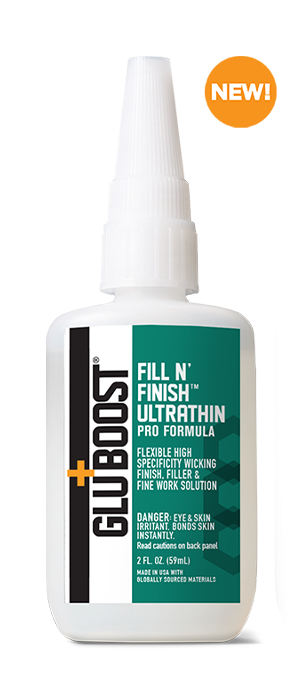Well, my journey into switching to GluBoost for my pen finish is ongoing. I did manage to find a solution that works for me, to ensure I get the finish on the blank, without any real issues. This involved using a foam applicator (which I glue wax paper onto, although if I can find the right foam I am hoping I may not have to do that), and trimmed whiptail applicators on the GluBoost bottles to control the rate of flow. This allows me to put very thin coats of the glue directly onto the blank, and the applicator ensures the vast majority of the glue stays on the blank, and spreads out smoothly. Getting good finishes now, however...I'm ending up with pretty thick CA glue (way thicker than I ever wanted), and the finishes look slightly plastic-like.
When I was doing my preliminary testing, I was able to get moderately thin final finish thickness, which I think looked a lot better. My problem seems to be that I'm over-turning the blank too much. I'm in the couple hundredths range, sometimes a little more. Some of this is probably techinique, and I just haven't honed in my ability to turn my blanks below the bushing size only slightly...I always seem to get more overturning than I want. So hopefully practice will help with that.
I feel like a couple hundredths or so, is just WAY too much... Aside from the plasticy look, it just requires a lot more CA to build back up to the specified diameter of the fittings. I'm curious what most CA finishers aim for when overturning. Does everyone overturn by hundredths? Or is it possible to overturn by say a few tens of thousandths? Is there a well known minimum floor that should always be reached when overturning, to avoid say sanding through the finish back into the wood (did that a couple of times early on when testing)? Should I say always aim to overturn by say 50 thousandths? Or should I be aiming for more, such as say just one hundredth?
When I was doing my preliminary testing, I was able to get moderately thin final finish thickness, which I think looked a lot better. My problem seems to be that I'm over-turning the blank too much. I'm in the couple hundredths range, sometimes a little more. Some of this is probably techinique, and I just haven't honed in my ability to turn my blanks below the bushing size only slightly...I always seem to get more overturning than I want. So hopefully practice will help with that.
I feel like a couple hundredths or so, is just WAY too much... Aside from the plasticy look, it just requires a lot more CA to build back up to the specified diameter of the fittings. I'm curious what most CA finishers aim for when overturning. Does everyone overturn by hundredths? Or is it possible to overturn by say a few tens of thousandths? Is there a well known minimum floor that should always be reached when overturning, to avoid say sanding through the finish back into the wood (did that a couple of times early on when testing)? Should I say always aim to overturn by say 50 thousandths? Or should I be aiming for more, such as say just one hundredth?

